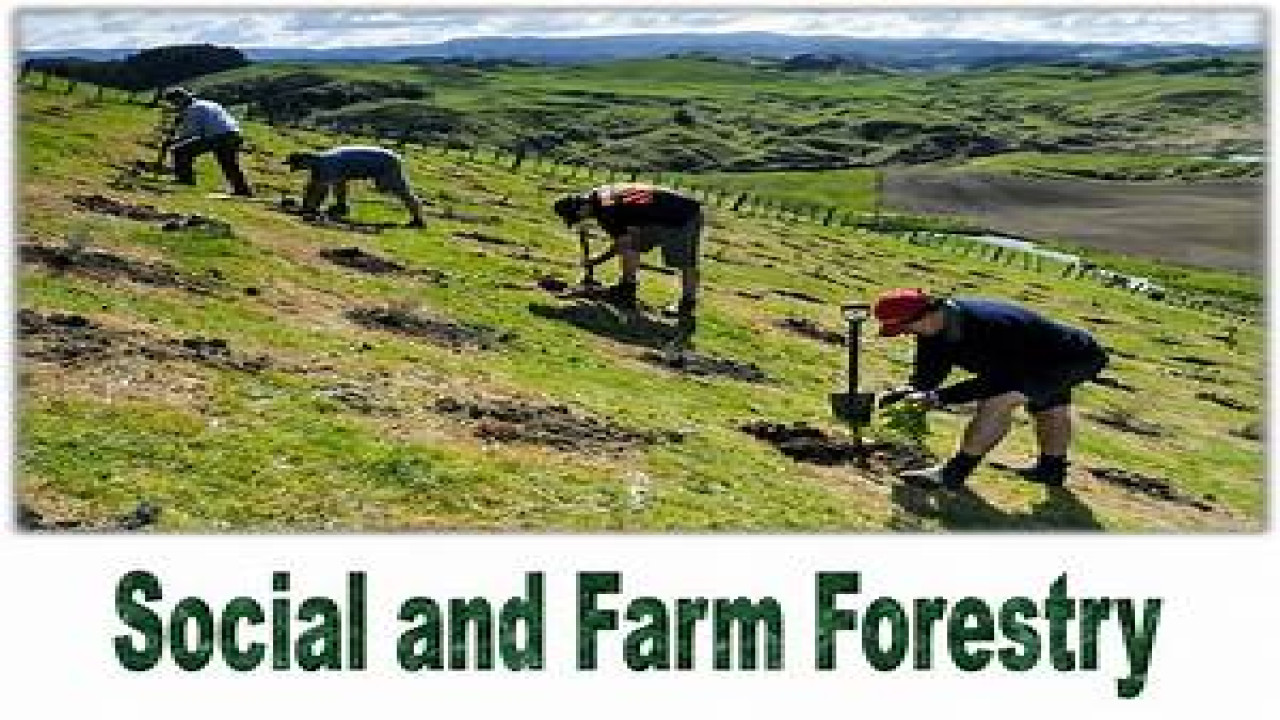Agroforestry and Social Forestry
Agroforestry and social forestry are two approaches to land use that combine agricultural production with forestry practices. These practices have gained popularity in recent years due to their potential to address issues of environmental sustainability, food security, and rural development.
History of Agroforestry and Social Forestry
Agroforestry and social forestry have a long history, dating back to traditional land use practices in many parts of the world. In many cultures, trees and crops have been intermixed for centuries, providing multiple benefits such as food, fuel, fodder, and medicine. However, with the rise of modern agriculture and the emphasis on monoculture, agroforestry and social forestry practices have declined in many parts of the world.
The concept of agroforestry gained momentum in the 1970s, with the development of sustainable agriculture practices. The idea was to integrate trees into farming systems, creating more diverse and resilient landscapes. Social forestry, on the other hand, emerged as a response to the deforestation crisis in many developing countries. Social forestry aimed to involve local communities in the management of forest resources, promoting sustainable forestry practices and providing livelihood opportunities.
Types of Agroforestry and Social Forestry
There are several types of agroforestry, including:
- Alley cropping: Alley cropping involves planting rows of trees in between crops. The trees provide shade and nutrient cycling, while the crops provide a source of income.
- Silvopasture: Silvopasture involves combining trees, livestock, and forage crops in a single land management system. The trees provide shade and fodder for the livestock, while the livestock provide manure to fertilize the trees and crops.
- Forest farming: Forest farming involves cultivating non-timber forest products such as fruits, nuts, and medicinal plants under the forest canopy. This approach promotes the sustainable use of forest resources and can provide a source of income for local communities.
Social forestry can be classified into several types, including:
- Community forestry: Community forestry involves the management of forest resources by local communities, who have a stake in the sustainable use of these resources. This approach can provide livelihood opportunities and promote sustainable forest management.
- Agroforestry systems for smallholders: Agroforestry systems for smallholders involve the integration of trees into smallholder farming systems. This approach can provide multiple benefits such as soil conservation, improved crop yields, and diversification of income.
- Urban forestry: Urban forestry involves the management of trees and green spaces in urban areas. This approach can provide numerous benefits such as air purification, temperature regulation, and aesthetic value.
Examples of Agroforestry and Social Forestry
- The Home Gardens of Kerala, India: The home gardens of Kerala, India, are a traditional agroforestry system that involves the intermixing of fruit trees, vegetables, and medicinal plants. This approach provides multiple benefits such as food security, soil conservation, and income generation.
- The Humidtropics Agroforestry Program: The Humidtropics Agroforestry Program is a global initiative that promotes the adoption of agroforestry practices in tropical regions. The program aims to improve food security, livelihoods, and environmental sustainability.
- The Social Forestry Program in Indonesia: The Social Forestry Program in Indonesia aims to involve local communities in the management of forest resources, promoting sustainable forestry practices and providing livelihood opportunities. The program has been successful in improving forest cover and reducing deforestation.
Issues Surrounding Agroforestry and Social Forestry
- Land tenure: Land tenure issues can pose significant challenges to the adoption of agroforestry and social forestry practices. In many developing countries, land ownership is unclear or contested, making it difficult for farmers to invest in long-term land use practices.
- Market access: The lack of access to markets for agroforestry and social forestry products can limit the adoption of these practices. Farmers need reliable and profitable markets for their products to justify the investment in these practices.
- Knowledge and skills: The adoption of agroforestry and social forestry practices requires specialized knowledge and skills, which may not be available or accessible to all farmers. Training and extension services are needed to ensure that farmers have the necessary knowledge and skills to adopt these practices.
- Policy and institutional support: The adoption of agroforestry and social forestry practices requires policy and institutional support at the national and local levels. This includes policies that promote sustainable land use practices and provide incentives for farmers to adopt these practices.
- Climate change: Climate change can pose significant challenges to agroforestry and social forestry practices, particularly in regions that are already prone to extreme weather events. Adaptation measures may be needed to ensure the resilience of these practices in the face of changing climate conditions.


